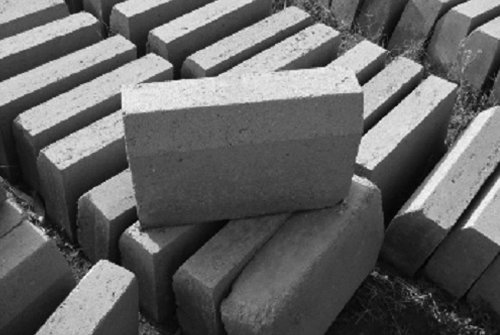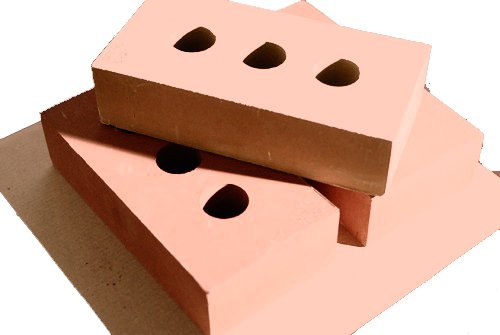Fly ash Bricks | An alternative Building Material
Fly ash bricks are masonry units that are used in the construction of buildings. They are considered to be a part of good and affordable building materials. They contain Class C fly ash and water.
Fly ash bricks are made by compressing Class C fly ash and water at 4000psi and then curing is carried on for 24 hours at a temperature of 66 degrees Celsius steam bath. Air entrainment agent is used to toughen the bricks.

Since the concentration of calcium oxide is very high in class C fly ash, the brick is described as self cementing.
It is considered to be a good alternative to traditional mud bricks since the method of manufacture of fly ash is energy efficient that is it helps save energy, brings about reduction of mercury pollution and plus it is cost effective.
Raw materials used for the manufacture of Fly ash Bricks:
- Fly ash – which is the primary ingredient
- Sand or Stone dust – as fine aggregate
- Lime – source of calcium carbonate which results in the bricks being called “Self-cementing bricks”.
- Gypsum – to enhance the fineness of the shape of the bricks
- Cement – to increase bonding and strength
General Characteristics of Fly ash Bricks
- The standard size of the brick is 230x110x70
- The bricks are manufactured and tested as per IS 12894-2002
- Fly ash bricks are sound, compact and uniform in shape, size and colour. Smooth rectangular faces of the bricks are accompanied with sharp and square corners.

- They are free from visible cracks, warpage, flaws and organic matter.
- Compressive strength: 7.5N/mm2 on an average
- Water absorption: <8%
Advantages of Fly ash Bricks
- They have high strength which is their primary benefit to be used for construction.
- Due to uniform size and thickness of joints, plaster consumption is minimized compared to clay bricks, thereby saving cement to the extent of 25% to 30%.
- Due to lesser water absorption, there is no dampness in walls.
- Gypsum plaster, Plaster of Paris can be applied directly without the basecoat of plaster.
- Wastage is very less as compared to clay brick.
- The bonding between the bricks is excellent since there is high concentration of calcium oxide in it.
Uses of Fly ash Bricks
Fly ash bricks are used for the construction of various types of buildings such as:
- Factories
- Warehouses
- Power plants
- Homes
- High rise structures
Basically, they are used in every kind of construction that can be possibly executed with the help of traditional bricks.
flyash, lime, stonedust as aggregate for bricks making and concrete paving blocks technology.
self cementing mean??
Hello Raag,
Self cementing means it has the ability to behave like a bonding agent. It has the ability to make good bonds. The bonding material required to fill the joints reduces to a great extent.
can I have some contacts who makes coloured fly ash bricks in india? if any body know please let me know
I have used Fly Ash bricks for house construction. Vertical and Horizontal cracks are appearing on walls. Almost all walls cracks are appearing, day by day cracks are increasing. Red or clay bricks wall this much cracks will not appear. Expert comments are required. Kindly advise me how to construct with fly ash bricks with out cracks.
Flyash bricks are better than regular bricks. If the walls are cracking, then that would mean structure is weak, and is causing beams to sag. Just a case of bad design.
what ddo wwee ssay that particular brick which has holes?
Hello,
My name is Dhaval and i am study 6th sem. Diploma civil engineering. i can use this brick in all type of structure as wrought in your article. but any minus point of fly ash brick? and what is price differences in Ordinary bricks and Fly ash brick? pls give me ans.
Dear mam,
I am constructing an STP tank at the site its depth is 1.0 m x 7.0 m x 3.0 m…3.0 m being its depth.. Now my question is ..is it necessary to keep this tank away from boundary by 3.0 m..?? As the bounday wall is already constructed i dont want to use the wall of the tank as the foundation for the bounday wall… plz suggest the best posiible way. i consulted a senior and he made a reference to angle of repose..because of which the pressure exerted by water on tank wall should not be transmitted to boundary wall foundation.. but i am not clear with the concept.
What is the quantity of raw materials required for 1000 bricks and cost analysis in comparision to AAC blocks
Hello Sriram,
If you are so curious to find out the quantity of raw materials, then you should contact the manufacturer for details. That would be helpful.
🙂
hi,
one of my client approached me to do the repair and rehabilitation of a church building constructed during British Era.You have any advise for how to go about it
is over reinforced beam suitable for building………??????/
No. Over reinforced or Under reinforced sections are unsuitable for any kind of construction.
BenzuJK
I think you should let us know the composition of the mix required for the manufacturer of fly ash brick.
Hi,
Nice to ready this article.
I have plan to build my house in Kolkata (near kolkata Dumdum airport)
Is there any possibility to get Fly ash Bricks. I will be highly obelised if you can share some contacts near by. Thanks, DK.
best idea
Hi,
i want ti know that the Proportion of flyash brick ingredient & what is the cost of plant.
Ajit Kumar Sharma
Dear sir, pl letmeknow what are the compostion of material used with percentage in manaufacturing of flyash bricks if arrange to manufacture the bricks
Fly Ash – 50 to 60%
River Sand or Stone Dust – 30 to 40%
Cement – 8 to 12%
hello sir I am planning to set a fly ash bricks plant.. but I want to know that what type of mortar required for the construction and plastering of these types of bricks wall.. is it the same ( cement+ river sand mixture) as used in the conventional clay bricks walls. also what are the reasons for cracks in this type of bricks wall…
m running a plant of fly ash bricks in bihar.for any enquiry u can contact me at 9546612503
also I want to know about the plant cost with 11520 fly ash bricks manufacturing per day capacity and the prices of raw material
what type of mortar used for construction and plastering of fly ash bricks wall.. is it same as used in conventional clay bricks I.e. cement + river sand mixture mortar
I want to build my house with fly ash blocks can you help me with this.
Fly ash bricks may have slightly better load carrying capacity than regular bricks. In an RCC structure, load carrying capacity of masonry units like walls is not considered in calculations. They are technically not considered structural members. Any extra support they may lend to the structure is extra factor of safety.
If you want a load bearing structure using fly ash bricks, that is also technically possible. But not recommended in this day and age. It is not economical, unless it is a single or double storeyed house. Also, too many compromises, like thick walls, and reduced earthquake resistance.